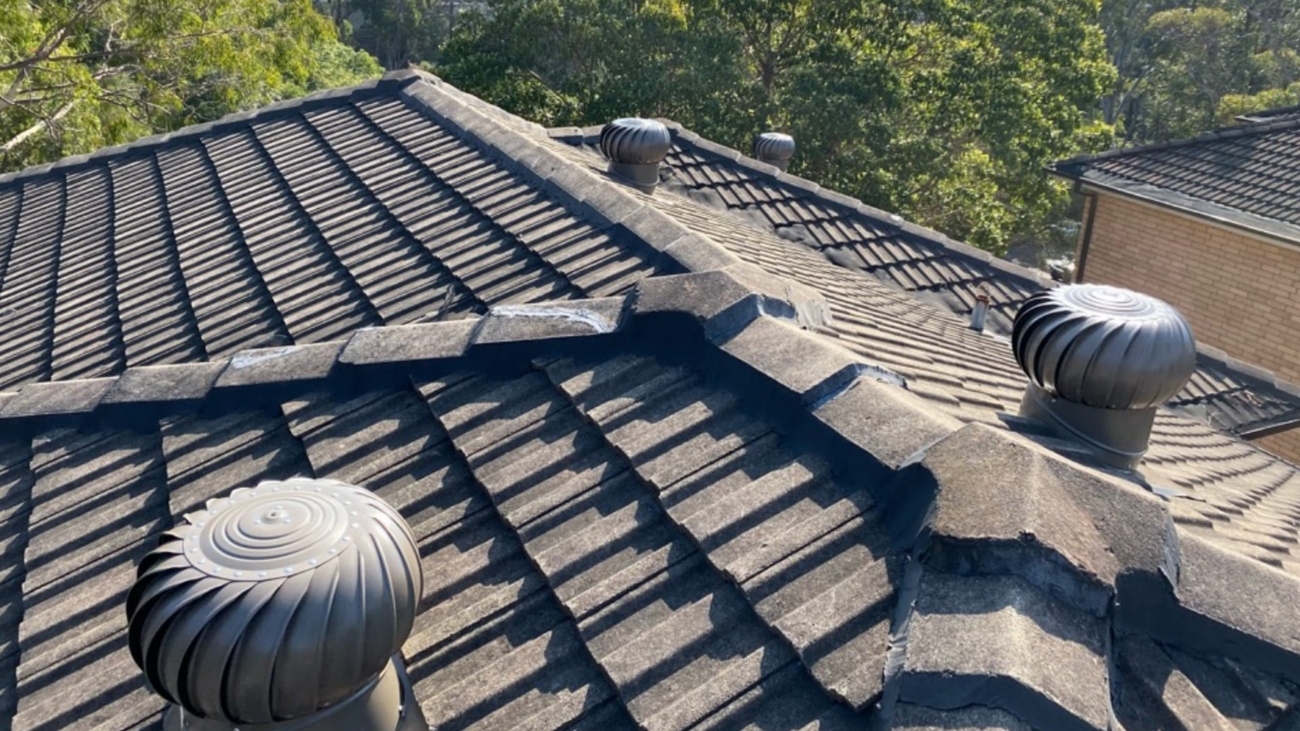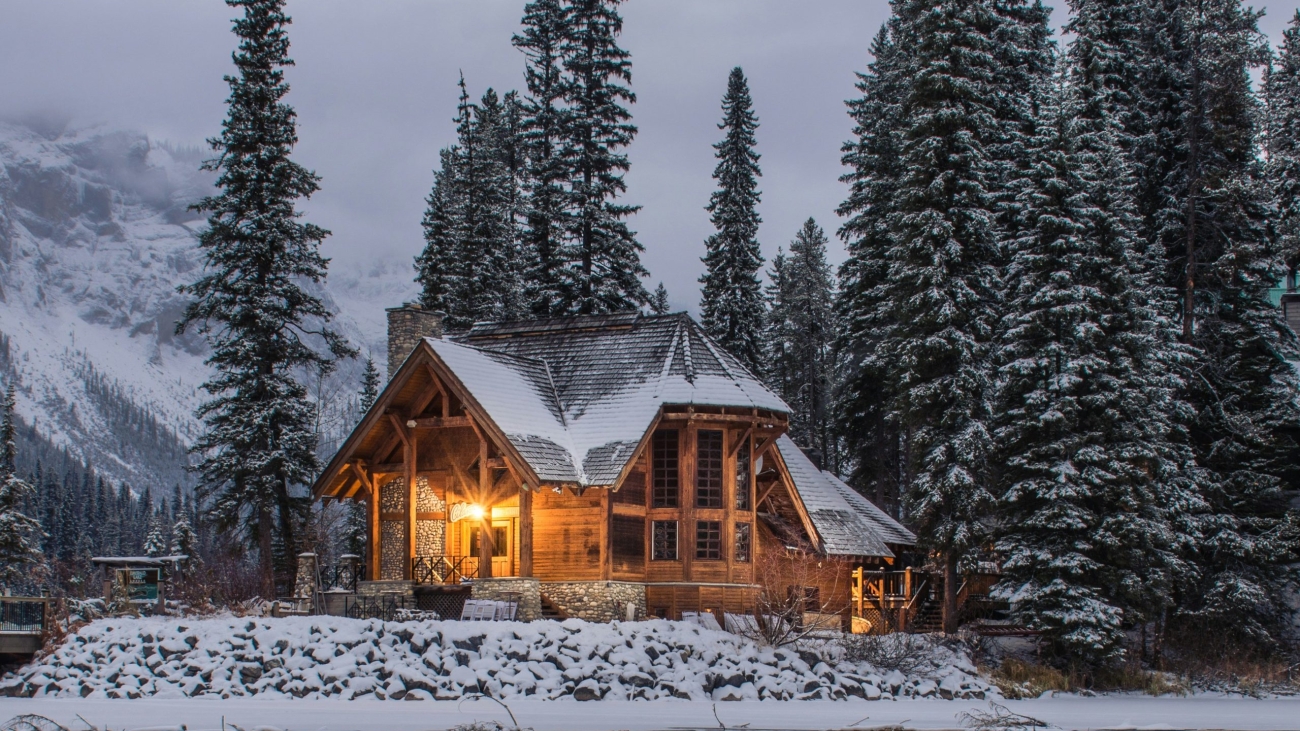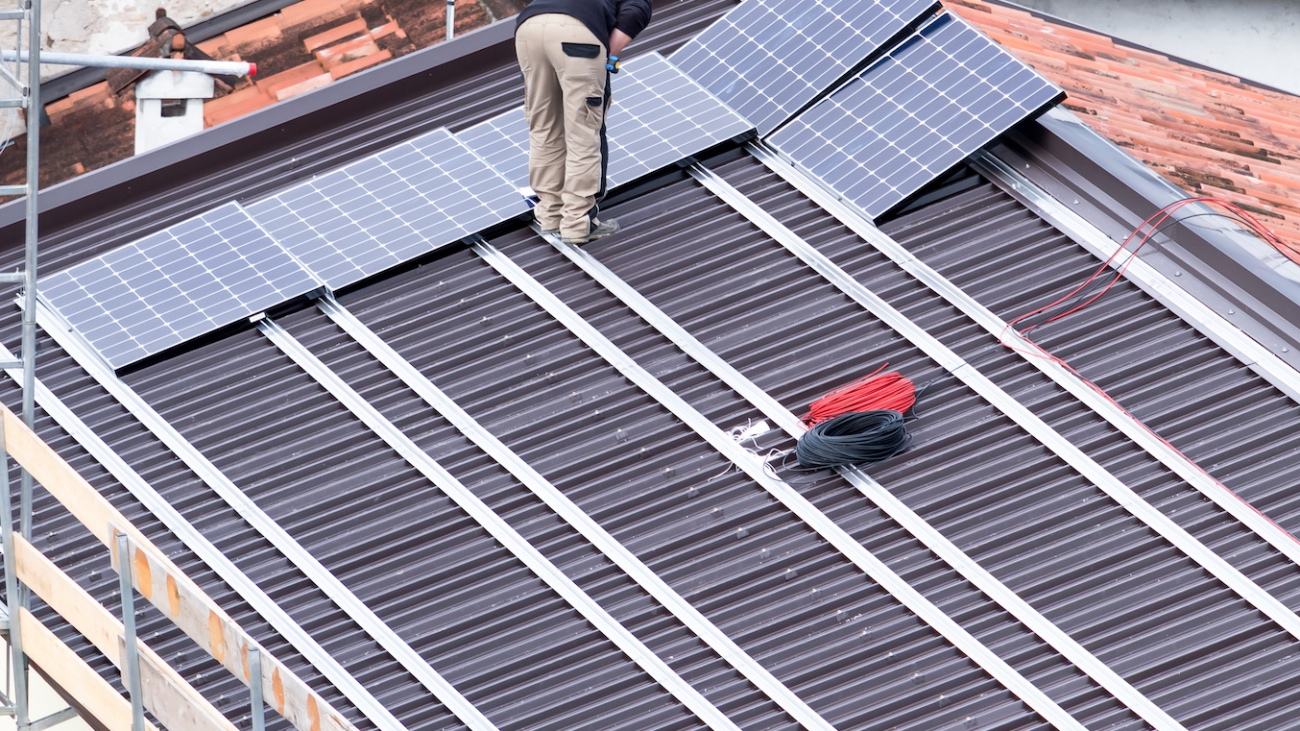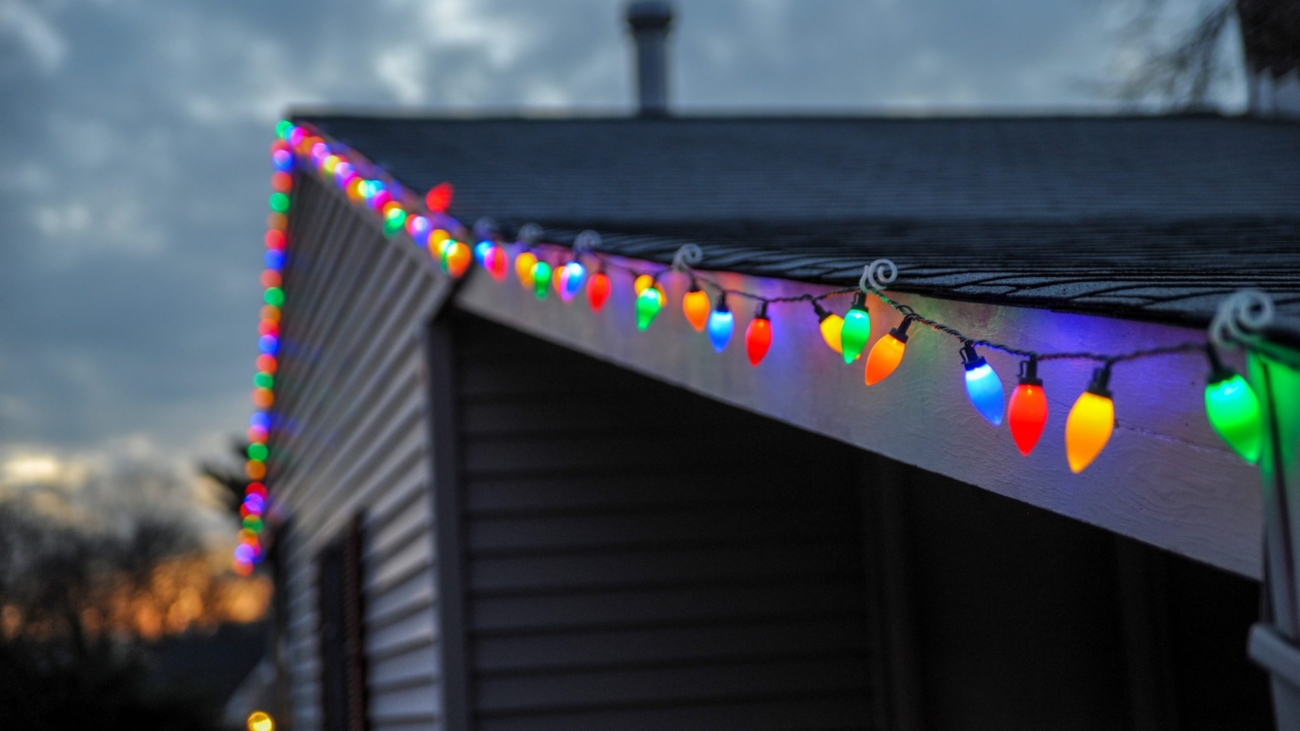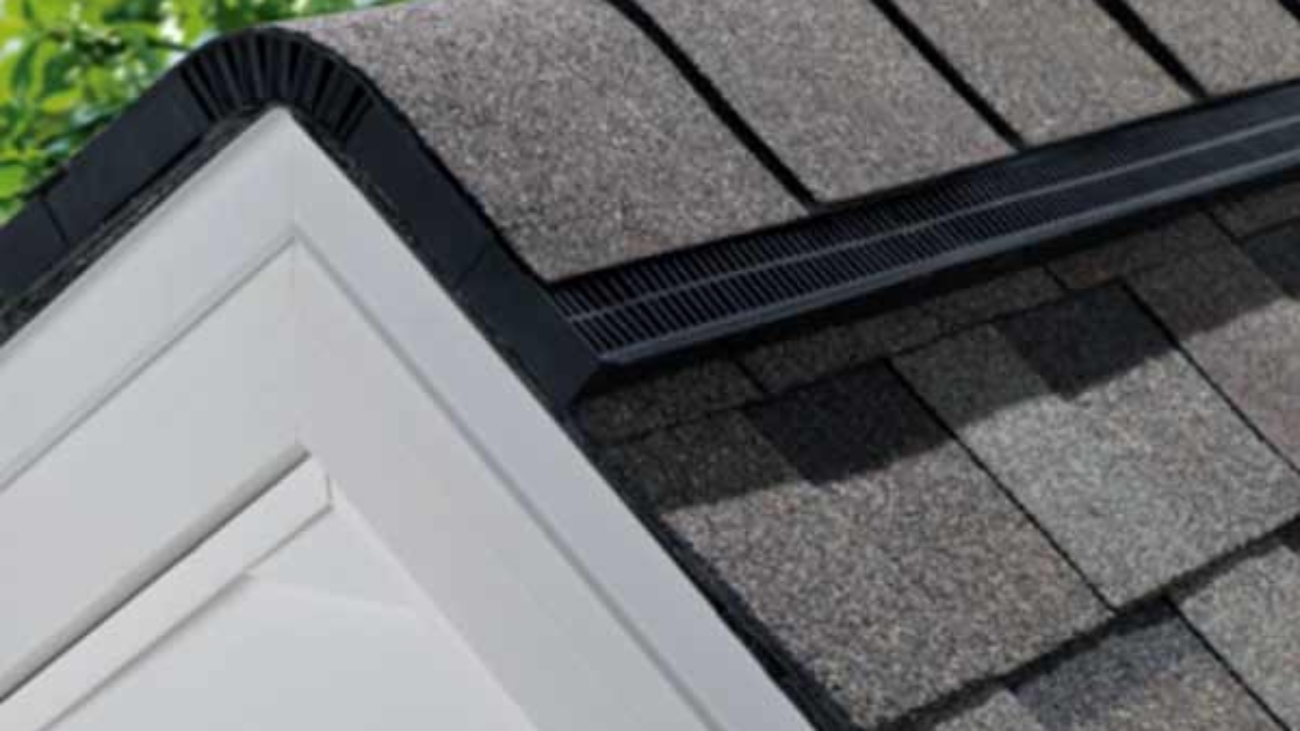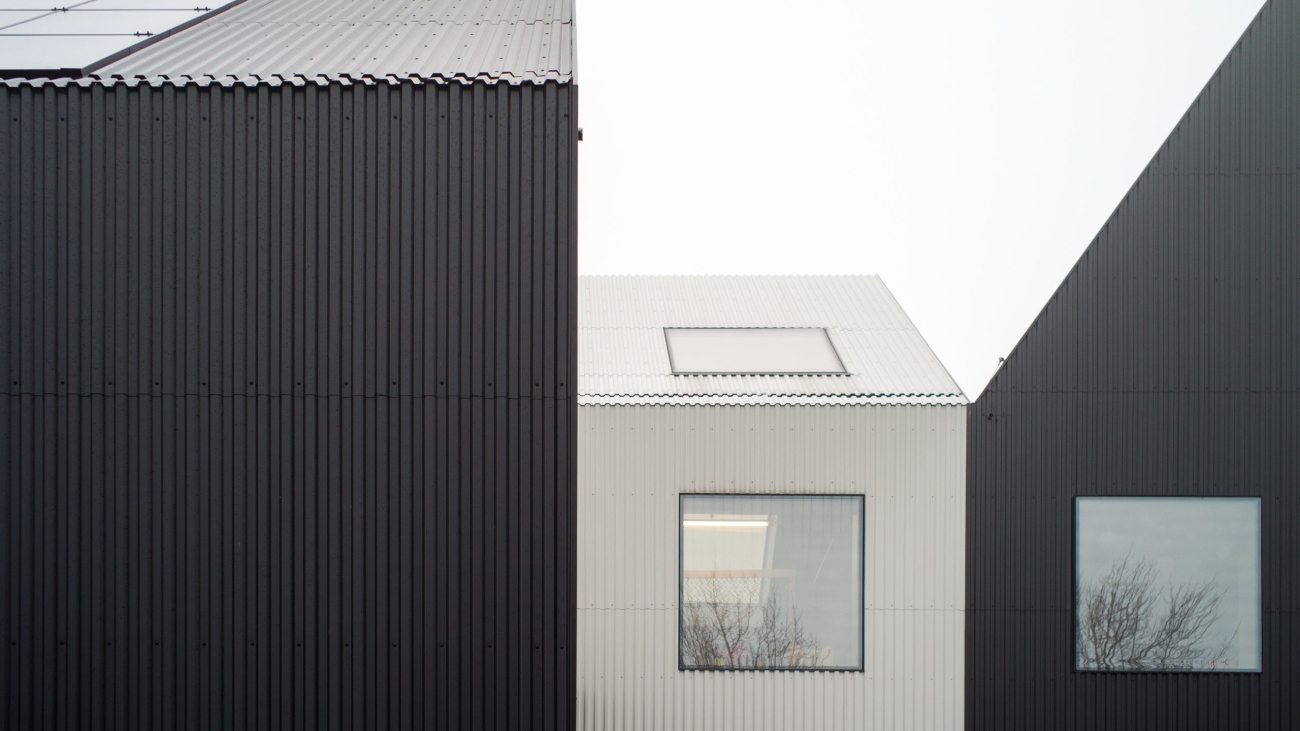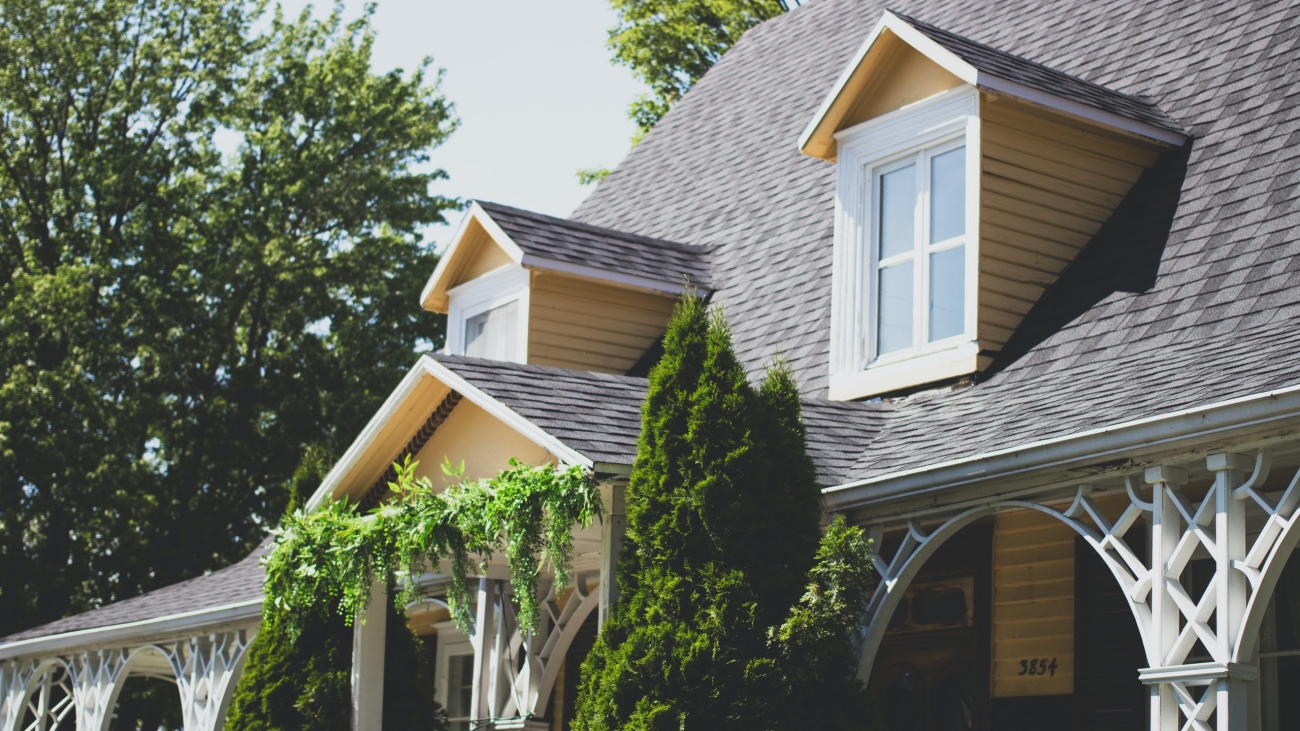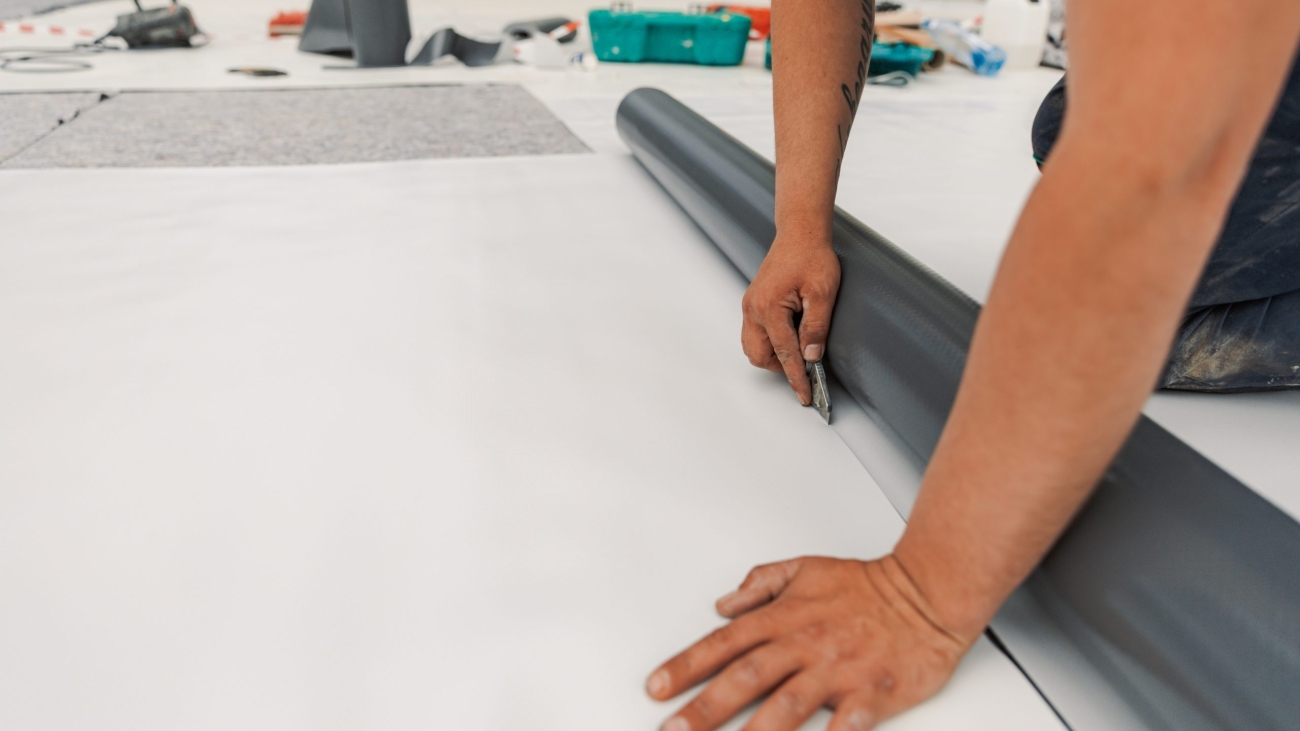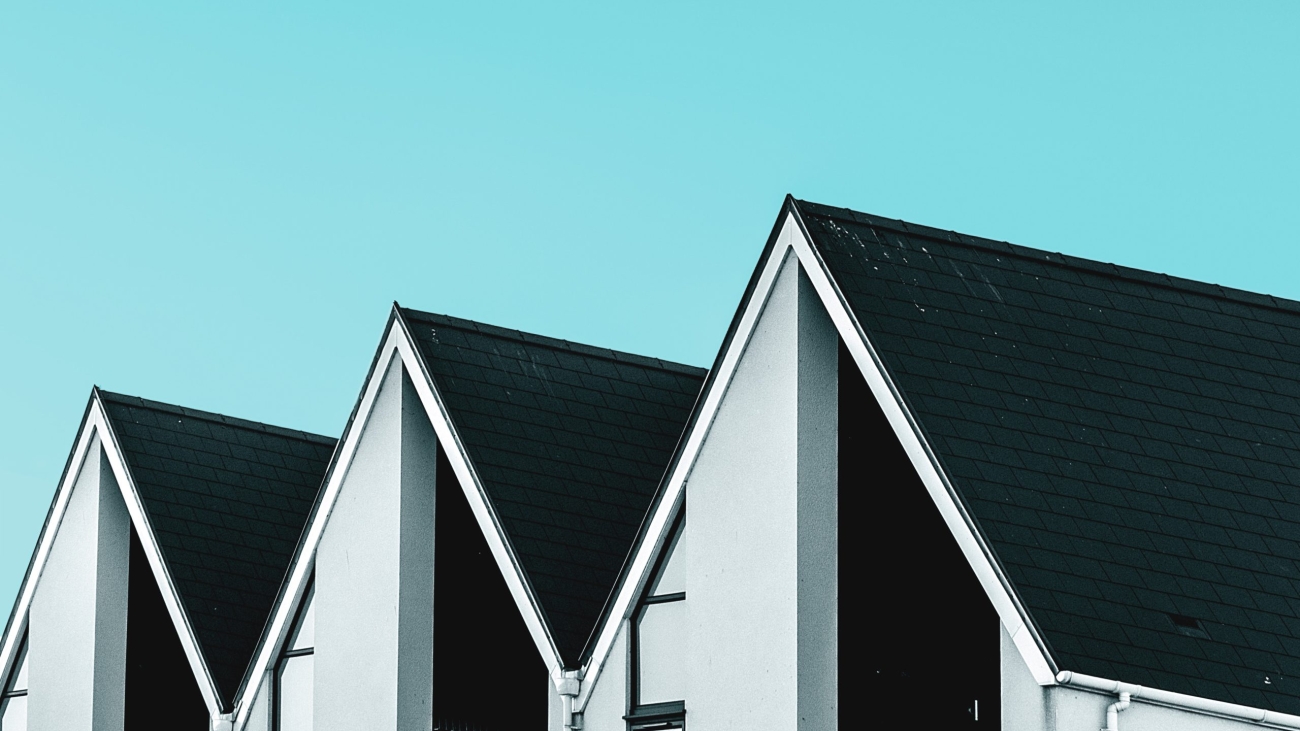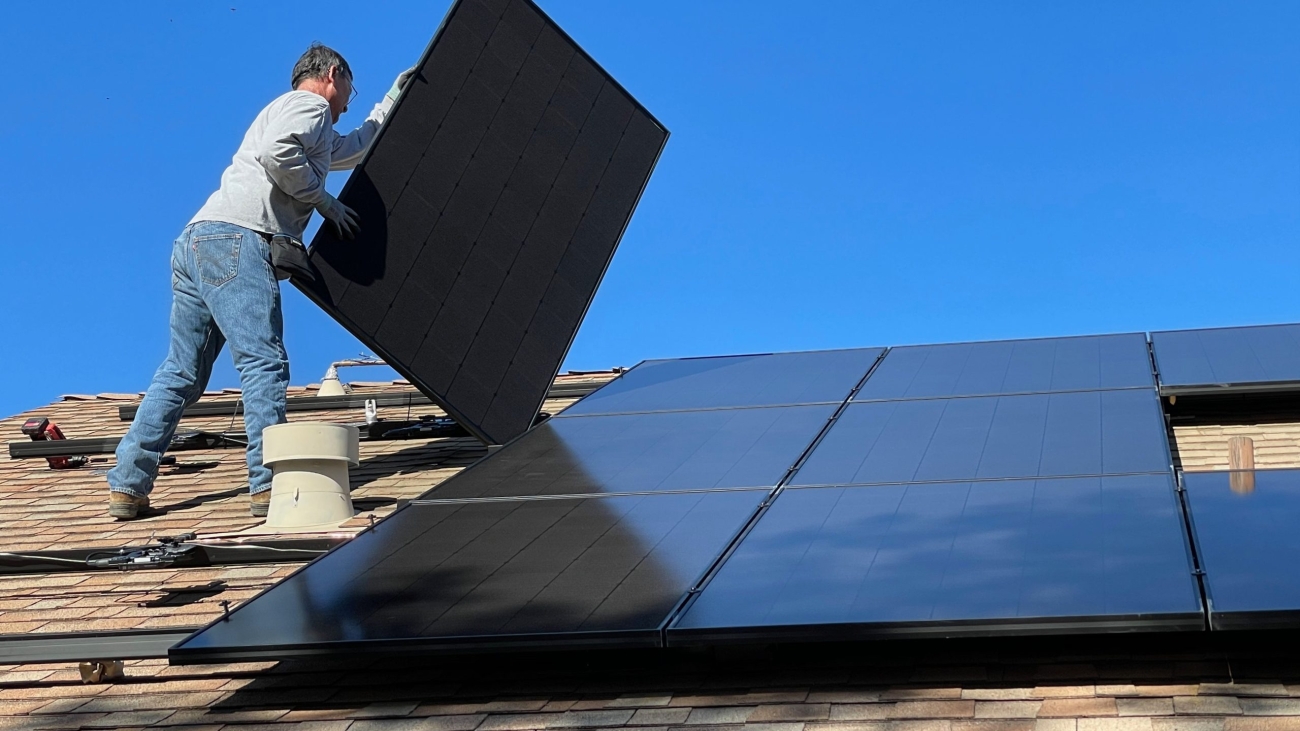When most people think about roof ventilation, they imagine hot summer days and the need to keep attic spaces cool. In reality, a properly ventilated roof is a year-round priority – especially in climates like Vancouver’s, where wet winters, seasonal temperature swings, and moisture issues are part of our day-to-day life.
Winter Challenges and Roof Maintenance
Winter Challenges and Roof Maintenance
Introduction:
As winter’s icy grip takes hold, your roof becomes the frontline defender against a barrage of challenges. From heavy snow loads to ice dams and freezing temperatures, the winter season poses unique threats to the integrity of your roof. In this comprehensive guide, we’ll explore the specific challenges winter brings and outline proactive roof maintenance solutions to ensure your home or business remains protected during the colder months.
Understanding Winter Challenges:
Winter brings a host of challenges that can compromise the health of your roof. Being aware of these issues is the first step in implementing effective preventative measures. Let’s delve into the most common winter challenges:
Heavy Snow Loads:
Accumulating snow can exert tremendous weight on your roof, leading to structural strain and potential damage. In regions with heavy snowfall, this becomes a significant concern, particularly for older or compromised structures.
Proactive Solution: Regularly monitor snow accumulation and consider snow removal services to alleviate excess weight, preventing structural damage and ensuring the continued integrity of your roof.
Ice Dams:
Ice dams form when melting snow refreezes at the roof’s edge, creating a barrier that prevents proper drainage. This can lead to water backing up under the roof covering, causing leaks and potential water damage.
Proactive Solution: Install heat cables along the roof’s edge to facilitate melting and discourage ice dam formation. Additionally, ensure proper attic insulation and ventilation to minimize temperature variations that contribute to ice damming.
Freezing and Thawing Cycles:
Fluctuating temperatures create a cycle of freezing and thawing, which can contribute to the deterioration of roofing materials. This continuous expansion and contraction can weaken the roof’s structure over time.
Proactive Solution: Conduct a pre-winter roof inspection to identify and address any existing damage. Ensure that your roofing materials are in good condition to withstand the rigors of freezing and thawing cycles throughout the winter.
Condensation:
Cold temperatures outside and warm air inside can lead to condensation within the attic space. Excessive condensation can result in mold growth, wood rot, and insulation damage.
Proactive Solution: Improve attic ventilation to maintain consistent temperatures and reduce the potential for condensation. Adequate ventilation helps regulate humidity levels within the attic, preventing moisture-related issues.
Proactive Roof Maintenance Solutions for Winter:
Snow Removal:
Regularly removing accumulated snow from your roof is crucial, especially after heavy snowfall. Use a snow rake or hire professionals to safely clear excess snow, preventing the risk of structural strain.
Ice Dam Prevention:
Install ice and water shield membranes along the roof’s edge to prevent water infiltration. Adequate attic insulation and ventilation are also key in maintaining uniform temperatures to discourage ice dam formation.
Roof Inspections:
Schedule a professional roof inspection before winter sets in. Experts can identify weak points, potential leaks, and areas susceptible to ice dams, allowing for timely repairs and reinforcement.
Gutter Maintenance:
Ensure gutters and downspouts are clear of debris to facilitate proper water drainage. Clogged gutters can contribute to ice dam formation and compromise the effectiveness of the entire drainage system.
Attic Ventilation:
Proper attic ventilation is crucial in minimizing condensation. Ensure that vents are unobstructed, allowing for the free flow of air to regulate temperatures and prevent moisture buildup.
Roof Material Inspection:
Examine your roofing materials for signs of wear, damage, or missing components. Replace any damaged shingles, flashing, or seals to maintain the roof’s integrity and prevent leaks.
Sealant Application:
Apply roof sealants around penetrations, such as vents and chimneys, to prevent water infiltration. Check existing seals for signs of wear and reapply as needed.
Insulation Upgrades:
Enhance attic insulation to maintain consistent temperatures and reduce the risk of ice dam formation. Proper insulation not only conserves energy but also protects the structural components of your roof.
Conclusion:
As winter descends, proactive roof maintenance becomes a shield against the seasonal challenges that can compromise your home or business. By understanding the specific threats posed by heavy snow loads, ice dams, freezing and thawing cycles, and condensation, you can implement targeted solutions to fortify your roof.
From regular snow removal and gutter maintenance to professional inspections and attic ventilation improvements, a comprehensive approach to winter roof care ensures your structure remains resilient in the face of winter’s harsh conditions. Embrace these proactive measures, and let your roof stand strong, weathering the chill with confidence and durability. Questions? Call the experts at Cambie Roofing today.
Solar Roofs: Are They Worth It?
Solar Roofs: Are They Worth It?
Unfortunately, much of North American still runs on nuclear power, coal and other fossil fuels. If we could get a cleaner source of energy, for example solar power it would have a big impact on the environment.
You’ve seen solar power roofs in the news, most notably when Tesla made a big splash recently with an advanced panel system that is more efficient and more powerful than the traditional technology.
But how viable is solar power in Vancouver? Is Solar Roofing Worth It? Let’s See.
Is Solar Roofing Worth It?
The main challenge is that Vancouver tends to have too much cloud cover for much of the year, especially in the winter months when electricity is most in demand. The northern latitude of the city also means days are shorter and solar radiation is less intense which of course, means less sunlight is converted to energy. When we look in comparison to some States like California, New Mexico and Arizona which are sunny all year round and demand is highest in the summer when power generation is at its peak, solar energy makes more sense.
But that doesn’t mean that solar power will never work in British Columbia and we should write it off totally.
Lets’ have a closer look at the technology and see if the technology is and can ever be useful in Vancouver.
What If You Want A Solar Panel?
If you believe solar power is the best option for you there are multiple variables to consider when seeking out the best solar panels on the market. While more high-end panels will have higher efficiency ratings than others, investing in the best solar equipment doesn’t always result in the higher savings. The only way to find the “sweet spot” for your home is to evaluate quotes with varying equipment and financing offers.
For any homeowner in the early stage of shopping for solar that would just like a ballpark estimate for an installation, do some research online before calling anyone. There are a lot of different tools to help you estimate long-term savings and the upfront costs. You will want to compare quotes from multiple companies and multiple sources before making a final decision.
How Much Does The Solar Panel System Cost?
While there aren’t a lot of companies to choose from in Vancouver, installation prices will vary significantly depending on the solar company you choose and the equipment you install. Keep in mind installing cheap solar panels might feel like the easiest way to save some cash and get rebates, your total savings will often be higher if you invest in top-of-the-line equipment.
Don’t forget to research the solar incentives and rebates available. In British Columbia they can reduce your net cost by 50 percent or even more. In addition, the Canada government offers a 30 percent solar tax credit. Do your research as cities like Nanaimo offer additional tax incentives.
Is Solar Power Worth it?
The average cost of solar power system in Canada is currently between $15,000 and $30,000 which is far more than the average Canadian is willing to pay. The average household uses 7,500 kilowatt-hours (kWh) but of course that changes on the time of year and the price of electricity. You can certainly save money if you plan on using solar power in the long run but you will have to do some calculations to figure out how much you spend on electricity to see if it’s worth it.
In some parts of the country, you can pay as little as 8 cents per kWh; in others, you’ll pay 20 cents or more. In British Columbia, you pay 8.29 per kWh for the first 1,350 kWh you use and 12.43 cents per kWh for everything above that.
When you go solar, you effectively install a small power plant on your roof to replace the electricity you get from B.C. Hydro. That means homeowners with high electricity rates from their utility are the ones who save the most when they switch to home solar power. For people who don’t want to rely on a centralized power source this may be important. If there is a black out and if you have a solar power generator you may not be effected.
Solar Roofing In Vancouver
If you want to install solar power because you want to reduce your carbon footprint there won’t be much difference if you live in British Columbia because over the long term, the carbon footprint of hydro power isn’t much different from solar. Hydro power uses water and floods entire valleys while solar panels requires large amounts of energy and toxic chemicals for the manufacturing process.
According to scientists, solar panels in a rooftop installation produce about 41 grams of CO2 equivalents per kilowatt hour over the lifetime of the system, mainly due to the energy required to manufacture the equipment while hydroelectricity produces 24 grams of CO2 equivalents per kilowatt hour.
Last Thoughts On Solar Roofing
For all solar electricity’s advantages, Vancouver is not the best place to install and use solar roofing system. The technology really works best where there is more sun for longer periods of time. In addition, power is not very expensive, so you won’t get much savings.
That’s not to say that solar electricity will be a bad idea forever. The technology will improve and become more affordable so sometime in the future it might replace hydro power as B.C.s number one electrical source. More forward-thinking companies like Tesla have made so much progress in cities such as Vancouver.
Originally published in 2018. Updated a republished Jan. 2024.
Roofing Tips For The Winter
Winter is definitely here in Vancouver and as you all know, the harsh conditions can cause damage and decrease the longevity of your home’s roof. If your roof needs repairs, it’s generally better to do them in the drier months. In fact, most experts say the best time to do work on a roof is from July to August when the weather is best. In a perfect world, summer would be great to finish all those projects, but your roof doesn’t just leak during those months.
Moreover, In British Columbia, where the weather is often unpredictable, these ideal conditions can be few and far between. Most roofing companies have to consider how they can perform a roofing job in the winter, in less than ideal conditions.
While not always the best, roof construction and repair can be done in cold weather, as long as precautions are taken. In winter, roofers face a variety of challenges including:
- Roofing materials don’t work quite as well as they do in moderate temperatures.
- Shorter days give roofers less time to work which generally means the project takes longer.
- Tools such as nail guns generally don’t work as well in the cold.
- Snow and ice can create hazards or cover up dangers to roofers.
What to Expect When Roofing in Winter
Roofing in winter weather requires a lot more foresight, planning and safety precautions than summer days. Be aware that some companies will charge you up to 20% more for their services, while other companies will be looking for work and might give you a discount. Whatever you do, you should shop around and get between three to five quotes and ask them specifically about their winter work.
Winter Safety Is The Most Important
Safety is obviously the most important thing when it comes to roofing – no matter what time of year. Under no circumstances should you hire a company that doesn’t take safety serious as there are some unique cold weather issues to be aware of when doing winter roofing work.
For example, roof surfaces can become slippery thanks to snow, ice, and frost. A common winter problem is snow removal or de-icing of the roof surface must be done after a snowstorm. The roofers must take extra precaution and use specialized equipment, which they need to be trained on, along with increased monitoring while the removal is taking place.
Snow can also disguise dangers such as skylights, debris and other risks. The roofing contractor needs to pay close attention to where they walk to ensure they don’t accidentally step on or fall through a skylight or trip over hazards hidden under snow. Even on a freshly cleared roof, there may be black ice or frost build-up on the roof or deck surface, which can make work extremely dangerous. If the temperature is too cold and the snow and ice remain, it is best to wait until the weather warms up.
Another thing to do before getting a roofing contractor to work is to ensure that the attic space is adequately air-condition. Often, what appears to be a roof leak is actually condensation from interior air drifting up into a cold, improperly ventilated attic.
Working in the Winter
Working in cold, damp temperatures can put a strain on the body, making your heart and lungs work harder, while at the same time putting you at increased risk for hypothermia or frostbite. Be aware roofers, as mentioned before, will work shorter hours, and plan around the sunshine and weather forecasts. Be prepared for work stoppage and delays because of the weather.
Roof contractors should also wear warm clothing that is breathable but also provides an ample range of motion. If you notice that a roofer isn’t appropriately dressed, do not let them work.
The Weigh Of Your Roof
Another thing to consider is the extra weight that snow and ice can add to a roof. If you add a human’s weight into the mix, you can potentially be looking at serious injury. A roofer must ensure that the surface he is working on is sturdy and safe from collapse. An experienced roofer will test the structure before beginning to work on it to ensure that there is no danger from collapse.
Equipment and Materials
Now you know what to expect in the winter, you also have to keep in mind the quality of craftsmanship which can suffer if the roofer is inexperienced.
Asphalt shingles
The best temperatures to install asphalt shingles is between 4 and 26 degrees Celsius. If a roofer decides to install roofing shingles in cold weather below these temperatures, your shingles may become brittle and more prone to breakage. To prevent this, when working in below-zero temperatures, make sure the roofer stores your materials in a warm place until you need them. Shingles will mould to the shape of the surface they rest on, so if you are buying them before using them, keep them flat, stacked and raised on pallets so they don’t touch the ground. Be aware that a roofer should not work in below-zero temperatures unless it is an emergency situation that needs fixing.
Types of Roofing Materials
Most roofing organizations recommend using winter weather membranes to seal your eaves, valleys, skylights, and vents, rather than warm weather roll roofing, which can buckle or warp when applied in cold weather. When you choose to use any kind of felt or membrane, the roofer will roll it out in a staging area, away from the elements and allow it to relax before you apply. This will help reduce wrinkles caused by the weather.
Conclusion
The information in this blog is purposeful to be a starting point for cold weather roofing applications. Each situation is different and as always consult a professional roofer before starting. If you have any questions, then please don’t hesitate to contact us at Cambie Roofing to schedule a free roofing estimate.
The Importance of Ventilation and Insulation in Asphalt Shingles
Roofs need the right balance of both ventilation and insulation to work properly, especially with the type of weather we’ve been having in Vancouver the past couple of ears. In warmer weather, poorly ventilated roofs can result in hot attic spaces which can significantly damage shingles, causing curling or even breaking, reducing the lifetime of a roof.
In the colder seasons, a lack of ventilation can trap cold air and cause moisture to build up, resulting in problems with mold, rot, and mildew, which can damage the roof and walls. Properly ventilated and insulated roofs upon are important to protecting against the problems caused by seasonal extremes and avoid costly repairs. Just think of the leaky condo crisis that cost Vancouver over $4 billion in damages because buildings didn’t have the proper ventilation.
While in Vancouver ventilation was a problem with newer buildings, it is usually common in older homes, which were generally constructed when building codes did not require as much insulation.
As many Vancouver builders discovered, creating the proper ventilation and insulation of asphalt shingle roofs is isn’t always easy. You need to get the advice of an experienced, licenced roofer to do the job correctly.
Roof Ventilation
Proper roof ventilation reduces electricity bills, extends shingle life, and prevents roof rot and ice dams in winter. Doing it right the first time also protects your house from expensive future repairs. The most important aspect of roof ventilation is to ensure your roof has vents so that the excessive moisture can escape. Ventilation is required by building codes. If you don’t properly ventilate your roof it will likely void your roofs warranty.
The number of vents within roof space will depend on the size of the roof and the material used, however, the general rule is that a single vent should be enough for a squared 30-meter roof space. A specific number of vents are required per square footage to ensure that the right amount of air enters and exits the attic.
Roof Insulation
Insulation plays a vital role in ensuring your home is properly ventilated. While you need to have enough insulation to help your house efficiently maintain a comfortable temperature. It is just as important t that you do not have too much insulation in case it blocks proper air circulation.
An experienced roofer or contractor can decide what your home needs and advice you on the proper course of action. Of course any work a roofer or building contractor does on the vents needs to be done carefully. So you do not decrease the area of the vents or anyway stop the airflow.
You probably won’t notice if something is wrong with your roof’s insulation or ventilation which is why it’s important to have an experienced, trustworthy roofer do a checkup at least once a year. If there is a problem with the airflow, they will know and be able to fix it. Often the solution depends on what is causing the lack of airflow. In the simplest and least costly case, there may be something obstructing the vents which is an easy fix.
lack of ventilation
Unfortunately, in many cases, the lack of ventilation is caused by something more serious. Such as a lack of or inappropriate placement of vents. If that’s the case, you might need to rip up a part or the complete roof to fix it.
Insulation placed on an air-sealed attic floor is simple, yet one of the most underappreciated building assemblies. A vented attic works in all types of climates to keep the home regulated.
Same, unexperienced builders do not install insulation correctly. Which causes excessive energy losses, ice dams, mold, rot which all need to be fixed sooner than it should.
If your builder has properly ventilated your roof space, then you will have to keep the vents free. So they can allow for proper air flow. This means that the vents should not be obstructed otherwise the moisture will still stay trapped within the roof structure. And eventually turn into mold and rot the wood.
Using Vents In Your Roof
There is a variety of different vents to select from when choosing a new vent for your roof. Two of the more common vents you will find are the box vent and turbine vents. The box vent uses natural air flow to draw hot air out of the attic. However they are not as effective as turbine vents and you will require more of them to properly ventilate your space. Turbine vents are wind-driven and more effective.
There is a third type of vent which are called ridge vents. But they are not as common as the first two. They, as you might suspect, run along the ridge of your roof. Moreover, They keep a more consistent temperature across your roof than box vents. And do not require wind to operate like turbines.
They are slightly more expensive, but when used with soffits. The underside of the area which connects the roof to the wall, they will keep your space well ventilated.
Conclusion
Whether you are in need a roof inspection or have a leaky, it’s important to choose a roofing contractor that is trustworthy, reliable, and experienced. At Cambie Roofing we are experts in providing you the service you need within your budget. Give us a call or email us for a free estimate.
Best Metal Roofing For Residential Areas
Best Metal Roofing for Residential Areas
Even in a city like Vancouver, the popularity of metal roof products has increased dramatically over the past decade, a clear sign that homeowners and builders are growing more and more aware of the benefits of this roofing. In fact, during the last ten years, a whole new type of metal roof materials has hit the market. These are a far cry from the old, expensive metal roofs which used to be on the market. Today’s metal roofs serve as high-tech answers to the need for durable, fire-resistant, lightweight roofing that looks at home on a house – and are cost effective too!
When considering a metal roof, you’ll first want to determine the fundamental look you want it to have. Residential metal roofing comes in two basic forms that are very different in appearance: sheet-like panels and shingles. Within these two categories, there are many variations, colours, and patterns.
Benefits of Metal Roofing Systems
The primary benefit of metal roofing is longevity. Manufacturers routinely offer 50-year warranties and even lifetime, non-prorated warranties. They claim their products will last two to four times longer than roofs with asphalt shingles. By avoiding one or two re-roofing jobs during the life of the metal roof, you will more than offset the higher initial cost.
There are other advantages, as well. Metal roofs are lightweight, sometimes allowing them to be installed directly over old roofs. Additionally, metal roofs are effective in preventing the spread of fire when hot embers fall on them. This could mean the difference of saving some of your most precious photographs or losing them in the event of a house fire. In fact, some insurance companies will give you a discount if you have a metal roof. In addition, metal roofing is made with a large percentage of recycled metal—often 95 percent—and when its useful life is done, it can be recycled again. No worries about it filling up dwindling space in landfills.
Metal Roof Materials
Residential metal roofing is generally made of steel, aluminum, or copper. Rolls of 24- or 26-gauge steel sheets are given a metallic coating to prevent rust, followed by a baked-on paint finish. Aluminum sheets don’t require the metallic coating but do get painted. Copper, often called a natural metal product, is neither coated nor painted, because it weathers without corroding. It is sometimes used for special features, such as the roof of a prominent bay window.
Metal Roof Textures and Finishes
Metal roofing products can be stamped into many shapes and are typically installed as interlocking panels with hidden fasteners. Viewed from a distance, they offer fairly convincing renditions of shingles and tiles.
Standing-seam metal roofs look exactly like what they are–long sheets of painted steel with vertical seams. From a design perspective, they are a purer product but not suitable for every home. Standing-seam roofs are perhaps best matched to the simple lines of cabins and contemporary home designs.
Myths About Metal Roofs
Myths and legends get started about all sorts of people, places, and building material. Metal roofing has more than its share, perhaps because it has undergone so many transformations over the years. Here are the most common myths about metal roofing:
• It will increase the likelihood of a lightening strike. Metal conducts electricity, but electricity is not drawn to it so you don’t need to worry about stormy weather.
• Metal roofs are noisy in the rain. Not so. They may even be quieter than other roof types
• A metal roof will make your house colder in winter. Actually, a metal roof has no effect on the temperature of the typical vented attic in winter. It’s the insulation under the floor of your attic that keeps you warm.
• Metal roofs are susceptible to damage by hail. While extremely large hailstones can dent a metal roof, normal hailstorms will not. With textured roofs, minor denting is not readily visible.
• You cannot walk on a metal roof. You can, but you have to know how to do it without causing damage. Check with the manufacturer of the product you choose.
Metal Panel Roofing
The most familiar pattern of panel-style metal roofing, “standing-seam roofing,” has raised ribs every 6inches or foot and is applied vertically on a roof and doesn’t attempt to look like anything other than what it is. It has a decidedly commercial look that is favoured by architects for its honest, clean, contemporary look, It is commonly used on homes ranging from mountain cabins to modern masterpieces but would look very out-of-place on a Colonial home.
Metal Shingle Roofing
Metal shingle-style roofing is quite different than sheet roofing. With this style, metal is formed into shapes that imitate Spanish tile, wood shakes, or slate. In addition, these shingles are typically given multiple-layer factory finishes that may include granulated-stone topcoats to complete the realistic effect.
Conclusion
Because a new roof is a major investment and something you’re likely to live with for a long time, it’s important to choose your roofing contractor carefully. This holds true for all types of roofing contractors but is even more important with metal roofing contractors because application of a metal roof is a specialty that requires skills and tools that are quite different than those used for installing more-typical roofing products. Whereas a typical roofing contractor can install wood or asphalt shingles, it takes a specialist to install mot types of metal roofing. At Cambie Roofing, we are experienced with all types of metal roofs and give you a fair quote.
For sheet metal roofing systems, choose a contractor who has had at least three years of experience installing metal roofs.
The best way to find a good metal roofing contractor is through friends and neighbors who have had similar work done. At Cambie Roofing we have an excellent reputation. Just look at our testimonies or ask any of our customers. If you ask, we’re happy to refer us to some of our happy clients.
Make appointments with at least three professional roofers. Make sure they are well experienced at the type of roof you intend to have installed. After talking to a couple of contractors, we know you’ll be happy to come back to us.
Originally published June 2018,
Updated and republished Dec. 2023
Shingle vs. membrane roofs
Shingle vs. membrane roofs
In today’s blog post, the experts at Cambie Roofing are diving into the differences between shingle and membrane roofs. Both systems play an integral role in the roofing industry and have been used for many years to safeguard homes or commercial buildings. When it comes to shingle vs. membrane roofs, here is what to know:
Shingle roof systems are often used in residential construction and are the most popular choice among homeowners. Membrane roofs are mostly applied to commercial buildings but have gained popularity among some residential builds as well. Today we are going to explore both systems, highlight their key differences and reveal whether or not they are a good option for your next project.
Shingle roofs
Shingle roofs are the most commonly used roofing system among homeowners in North America. This is because they are extremely affordable compared to many other roofing systems. Shingles are individual pieces that overlap one another to create a functional roofing system. There are various types of shingles available on the market, including the popular asphalt, as well as wood, metal and slate.
What type of shingle you go for will depend on your budget and your aesthetic preferences. Asphalt shingles have been around since the early 20th century and have since revolutionized the roofing industry as the most affordable option for homeowners. While affordable, shingle roofs do not have the longest lifespan and are prone to needing maintenance and/or replacement sooner than other types of roofing.
Membrane roofs
Looking at membrane roofs, these systems are the most popular among commercial roofing projects. Unlike shingles, a membrane roof consists of a single layer of material that is installed and welded together in large sheets to make one continuous layer of protection. Membrane roofing systems are often made from Ethylene Propylene Diene Monomer (EPDM), Polyvinyl Chloride (PVC) or Thermoplastic Olefin (TPO).
Predominantly used on commercial buildings, membrane roofs are a good choice if your roof is flat or has a slope of less than 14 degrees. Lots of commercial buildings have flat roofs compared to residential buildings which is why membrane roofs are not as common in the home roofing world. Membrane roofing systems are extremely durable and offer energy savings.
Key differences
There are many key differences between shingle and membrane roofs, aside from shingles being popular in sloped residential builds and membrane roofs being more popular in flat roof commercial builds.
Lifespan
Both shingles and membrane roofs require professionals to install them. However, when it comes to durability, shingles have a shorter lifespan. This means shingles don’t last as long as membrane roofs and require more maintenance including repairs and replacements. Typically a well-kept shingle roof can last up to 20 years and in some cases 30 years. However, membrane roofs have a way longer lifespan with averages ranging between 30 and 50 years.
Maintenance and durability
And if you live somewhere with extreme weather conditions including hail, strong winds and heavy rain, membrane roofs are very resistant. Shingle roof systems are more prone to damage from ice dams, especially if they are old. Membrane roofs typically don’t need as much upkeep either. So, if you’re looking for a long lasting roof with little maintenance, a membrane roof could be right for you as long as your roof is flat or extremely low sloped.
Cost differences
As already mentioned, the cheaper option when it comes to shingle vs. membrane roofs is shingles. They have a more affordable initial installation and the materials are also less expensive than membrane roofing materials. You will however likely be spending more money more frequently to upkeep and repair your shingles than you would with a membrane roofing system.
Environmental impacts
Shingle roofs can be found in a variety of different materials, including some that are more eco-friendly than others. Lots of the shingles on the market are made from recycled materials including rubber, plastics and wood fibers. Picking materials that have been recycled helps lower your carbon footprint. However, if you opt for the very popular asphalt shingle when choosing your roof, be aware that these are not eco-friendly. Experts suggest they can take up to 400 years to decompose.
Looking at membrane roofing systems, it also depends on what materials you choose when it comes to environmental impacts. TPO roofs can be recyclable however the production process involves many chemicals derived from fossil fuels. EPDM roofing is also recyclable and does not contain harmful plasticizers or chlorine, however it also uses fossil fuels when being produced. Lastly, PVC roofing has transformed in recent years to not include chlorine. There are far more environmentally friendly PVC roofing formulas on the market today but some membranes still use fossil fuels.
Energy efficiency
When it comes to shingles, they aren’t overly energy efficient. This is especially true if you have dark asphalt shingles, because they absorb lots of heat. So if you live in a place with warmer temperatures, your asphalt shingles could be causing your cooling costs to go up. Luckily, there are a few ways to make your shingle roof more energy efficient. This includes choosing a shingle that is light coloured such as white or light gray. These colours reflect heat and sunlight which means they will help keep the inside of your home cooler.
Another way to make an existing shingle roof more energy efficient is to add a cool roof coating. It is best to consult the professionals at Cambie Roofing before applying a cool roof coating. This will ensure the roof is in perfect condition and is clear of all debris. As for membrane roofs, they can be very energy efficient. This is thanks to the fact they reflect sunlight and in turn, lower your home’s heat absorption. Questions? Contact us today.
Final thoughts
Choosing the right roofing system for your project depends on a number of factors. This includes whether your project is residential or commercial, if your roof is flat, low sloped or sloped, your budget, aesthetic preferences, climate conditions and more. Consulting with the professionals at Cambie Roofing is the first step. We can provide you with a thorough and free estimate, along with detailed recommendations. Once we help you determine the best roof for your project, you can trust that we will install a top quality roof that will protect your home or commercial property for years to come. We hope this article helped give some insight into shingle vs. membrane roofs. Give us a call for more information!
What is TPO roofing?
What is TPO roofing?
When it comes to choosing the right roofing option, there are so many choices on today’s market it can get a little overwhelming. In this blog post we are going to answer the question ‘what is TPO roofing?’ – as well as dive into the advantages and disadvantages, what it is, how to install it and if it’s the right choice for you. TPO stands for Thermoplastic Olefin which is a single-ply roofing material made from rubber and reinforcing fillers.
TPO is installed in large sheets that are welded together at the seams using heat. This achieves a seamless and water resistant finish. TPO is typically used for commercial and industrial projects but has been gaining popularity in residential projects.
TPO roofing advantages
Durability: TPO roofing is recognized as an extremely durable roofing material. Because of this, it is favoured in climates with different weather conditions such as intense rainfall, strong winds, hail and extreme temperatures – both hot and cold. The materials found in TPO can withstand tears and punctures caused by these weather conditions.
Cost-Effective: TPO roofing is a very popular choice for those looking to keep costs relatively low. The initial installation cost is low and because of its long lifespan, you won’t be spending a lot of money on maintenance or repairs either.
Low Maintenance & Long Lasting: As mentioned above, TPO roofing is low maintenance. If you want a roofing system installed that doesn’t require much upkeep then TPO roofing might be a good choice. TPO is resistant to chemicals and is less likely to support algae growth.
Environmentally Friendly: Because TPO is 100% recyclable, it is considered an environmentally friendly option. So even when the time comes that it does need replacing, your materials will be recycled. So if you’re looking to reduce your environmental impact, opt for TPO.
TPO roofing disadvantages
Limited aesthetic options: TPO roofing materials can be found in some colours but the selection is not extensive. So if you’re looking for a specific colour to match your aesthetic preferences, TPO might not work for you.
Welding Complexity: Proper installation of TPO roofing requires skillful heat welding of seams. If not done correctly, seam failures can occur, leading to leaks and other issues. It’s important to hire the experts at Cambie Roofing as this is not a DIY project.
Variability in Quality: The quality of TPO membranes can vary between manufacturers. It’s crucial to select a reputable TPO product from a trusted manufacturer to ensure the best performance. The experts at Cambie Roofing choose only the best materials so not to worry!
Despite these disadvantages, TPO roofing is a very popular choice thanks to its reliability, cost-effectiveness and environmental benefits.
Installation process
It is recommended you hire the professionals at Cambie Roofing to install your TPO roofing system. To do so, this system is installed as a single-ply membrane. Firstly, we will prepare your existing roof surface by extensively cleaning it, as well as remove debris. Then we will install insulation to ensure energy efficiency, while providing a stable layer for the TPO membrane.
Next, we will lay out the TPO sheets and attach them together using professional adhesives. Once laid out, the seams between the sheets will be welded together using heat – this creates a water resistant seal. After this, we will ensure all flashing and detail work is perfected to ensure the entire roof is waterproof. Lastly, our qualified team members will perform an inspection to ensure that the roofing system meets all quality standards.
Final thoughts
There are some factors to consider when choosing a roofing system that is best for you. TPO is suitable for most commercial and industrial projects however it can be used on residential builds as well. Take into consideration your budget, climate, building type, local building codes and your overall aesthetic preferences when considering TPO. This type of roofing is durable, emergency efficient, cost effective and easy to maintain. If TPO does align with your specific requirements, give us a call today and we will provide you with a free estimate. A properly installed and maintained roof will last your home or commercial building for years to come.
Choosing a sustainable roof coating
Choosing a sustainable roof coating
Whether you’re a homeowner or a business owner who needs roof work, it is imperative that you choose materials that not only protect against the elements but something that offers you a good investment. In this blog post we are going to dive into sustainable roof coatings which have gained popularity in recent years.
These coatings are environmentally friendly but they are also good for your pocket as they lower overall energy consumption. In addition, they will extend the lifespan of your roofing system while minimizing the environmental impact your property has. Continue reading to learn about what roof coatings are, the sustainable options available in today’s market, why you should opt for a sustainable roof and all of the benefits that come with sustainable roof coatings.
What is a roof coating?
A roof coating is a fully adhered fluid that is applied to your existing roof system which works as a protective layer against harsh weather conditions. This protective layer also known as a fluid roofing membrane has a plethora of benefits in addition to weather protection, this includes durability, energy efficiency, cost effectiveness and positive environmental impacts.
Roof coatings are available in many forms whether that be polyurethane, silicone or acrylic among others. Once a roof coating liquid is applied to your roofing system, it will extend the life of your roof while lowering the need for repairs and replacements. A roof coating is always recommended to help extend the longevity of your roof.
What makes a coating sustainable?
If you want to add a sustainable roof coating to your roofing system, there are a few things to look for.
Cool roof coatings: These coatings are reflective which means they reduce the amount of heat that your roof absorbs. In turn, it will help lower your utility bills because you won’t need to run your HVAC as much! A cool roof coating helps keep money in your pocket while also decreasing your carbon footprint, a win-win.
Recycled materials: Some roof coatings can be manufactured from recycled materials which is wonderful for the environment. Ask us, the experts at Cambie Roofing about the different materials available and if utilizing recycled materials is possible for your project. If it is, you’re contributing to reduced waste and the conservation of valuable materials.
Low volatile organic compounds: Also known as low VOC, these roof coatings are made up of less chemicals which means less harmful emissions. These compounds also make for a safer work environment for the roofing installers as well as the people living beneath the roof!
Polyurethane roof coatings
Polyurethane materials contribute to the sustainable preservation of energy. These roof coatings are extremely durable and waterproof, making them a popular choice within the roofing industry. If your building or home is situated in a wet area with plenty of rainfall, having a polyurethane roof coating is going to protect your roof from the elements. These coatings can be applied to various roofing substrates such as foam, concrete and metal.
Silicone roof coatings
Silicone roof coatings are another great option although they are mostly used on flat and low-slope roofing projects. That’s why they are more popular among commercial and industrial builds. Silicone is very long lasting and is wonderful when it comes to UV resistance – making it another sustainable roof coating option. In addition, it is waterproof and weather resistant.
Acrylic roof coatings
Lastly, acrylic roof coatings are another sustainable and versatile option. If your roofing project calls for the restoration of an existing roof, you may want to consider an acrylic roof coating. They are used to restore a plethora of materials including single-ply membranes, asphalt, metal and more. Both used in the residential and commercial roofing worlds, acrylic coatings help reduce heat absorption, in turn lowering your utility bills.
Why choose a sustainable coating
There are a multitude of benefits that come with choosing a sustainable roof coating. The obvious is the positive environmental impacts they offer which help contribute to a greener future in an industry that historically was not environmentally friendly. These coatings are also energy efficient because they reflect heat which means a cooler and more comfortable indoor temperature. Again, this lowers the need for air conditioning which saves you money and reduces your reliance on energy.
It’s important to invest in a roof coating because it acts as an extra layer of protection from any weather conditions your home or business may face. This includes heavy rain, hail, extreme periods of heat, wind and snowfall. By extending the lifespan of your roof, you won’t have to spend nearly as much on repairs or premature replacements. Even if the initial investment costs you money, the longer term financial benefits will prove worth it. These coatings can also help increase your property value which will come in handy if and when you decide you want to sell. Many purchasers look for sustainable features and having an eco-friendly roof could be a main selling point.
Final thoughts
Choosing a sustainable roof coating for your property is a wise investment that benefits your building and the environment. The experts at Cambie Roofing are happy to discuss the various options available to you as well as provide you with a free estimate for your project. Benefit from the various advantages such as being more eco-friendly, energy efficient, reduce your maintenance costs, extend the lifespan of your roof and more.
Modern roofing materials
Modern roofing materials
Trends come and go within our society on a regular basis, this is especially noticeable with fashion. Certain things that once were in style no longer are while other things have come back into style, full force. This also applies to the look of our homes and in this blog post we will dive into all modern roofing materials as well as the do’s and don’ts when it comes to following these trends. Many modern roofing materials are not only aesthetically pleasing, they offer benefits that older materials never could.
Synthetic materials
Many homeowners and commercial building owners now opt for synthetic materials when building their roofs. This is because they offer durability while typically using recycled materials. Things like synthetic slate and shake are common choices, being made from recycled polymers. These materials are very weather resistant and also very sustainable.
So, if you’re building your roof and you want it to be environmentally friendly, choosing recycled synthetic materials is the right choice. You can find these materials in various colours and styles that all offer long-lasting protection for your home. Many people will opt for synthetic materials because they are lightweight which means they put less stress on your structure than other roofing choices. This means it’s easier to install as well as maintain.
Metal roofing systems
Metal roofs have gained popularity in recent years and not just with commercial buildings but also homes. It used to be that metal roofing systems were only used for structures like barns and industrial buildings. However, because of their style, metal roofs have joined the top modern roofing materials on the market.
Often metal roofs are made using standing seam designs which provide ample protection against all weather conditions including heavy snow and extremely hot temperatures. They also are perfect for reflecting sunlight which in turn will lower your energy bills. Metal roofs are no longer overly loud either thanks to modern installation techniques. While they can be a tad pricey upon installation, metal roofs are designed to last and they are great for being fire resistant.
Cool roofing techniques
Everyone wants to be comfortable in their homes which means it can’t be too hot. As the world continues to live with the effects of climate change, being environmentally conscious is something many are striving for. Cool roofing techniques help combat rising temperatures by using reflective materials such as coatings, tiles, shingles and more.
In turn, this helps keep your home at a more comfortable temperature while reducing your reliance on air conditioning. Having a cool roof is something to consider especially if you live in a dense urban area with plenty of neighbouring buildings. But it doesn’t stop there, cool roofs also contribute to lowering greenhouse gas emissions. This means having a cool roof will save you money on energy consumption while also being environmentally friendly! A win-win for homeowners looking to make a difference.
Solar panels
For our last modern roofing material, we are going to touch on solar panels. Another step towards sustainability is using solar panels on your roof. They carry amazing energy generating capabilities but they also offer stylish and modern architectural looks. We have already mentioned how modern roofing materials are fueled by the desire to be environmentally friendly which is why solar panels are now becoming a common necessity. Solar panels lower energy bills and reduce carbon footprints by converting sunlight into electricity. This takes away the need to rely solely on traditional energy sources. By investing in solar energy for your home, you’re investing in the future.
Conclusion
All modern roofing materials have something in common – positive environmental impacts. Nowadays you are no longer limited to historic roofing techniques that can be expensive, hard to maintain and are not good for the environment. Today, you can find roofing materials that are both stylish and modern but also good for your pocket and the environment. Whether you opt for synthetic roofing materials such as recycled slate and shake, a beautiful metal roof and/or solar panels, all of these options can be made into a beautifully designed modern roofing system.
If you want to learn more about these roofing materials, contact the experts here at Cambie Roofing. We provide free estimates and have more than 75 years of experience in all things roofing. We are here to help you decide on what roofing materials are best suited for your home, budget and desired look. We know the pressure of wanting a roof that is visually appealing but also environmentally responsible.

